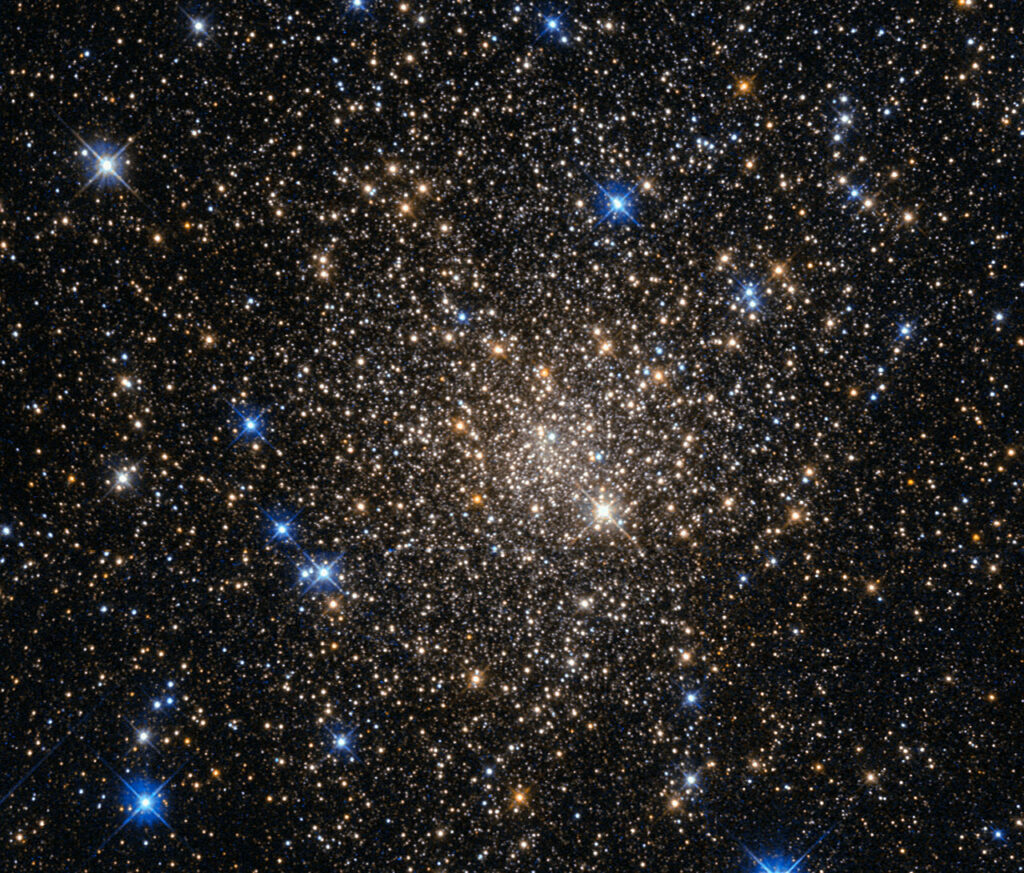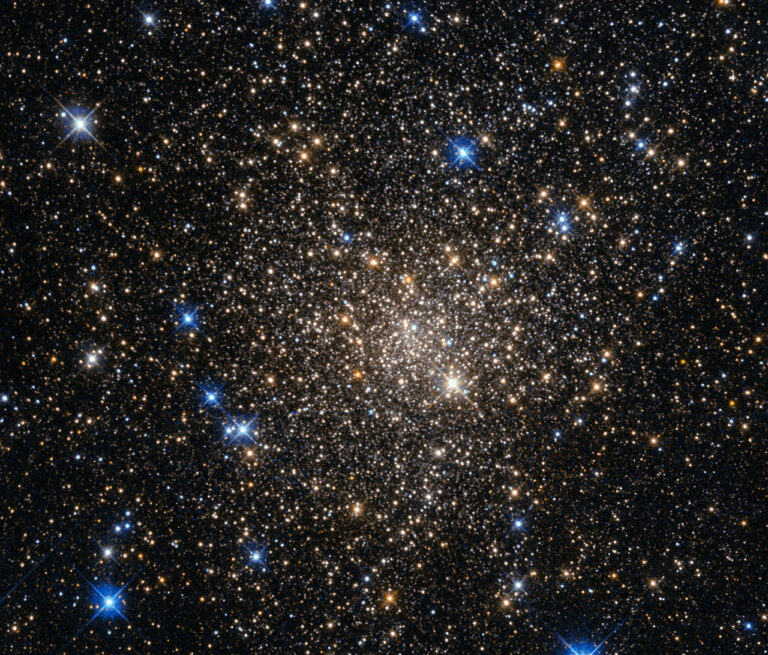Picture: Hubble Examines a Dwelling Place for Aging Stars
This photograph, captured by the NASA/ESA Hubble Space Telescope’s Wide Field Planetary Camera 2, displays the globular cluster Terzan 1. Situated approximately 20,000 light-years away from us in the Scorpius constellation, it is one of the 150 globular clusters that belong to our galaxy, the Milky Way.Typical globular clusters consist of roughly a hundred thousand stars, bound together by their mutual gravitational attraction, forming a spherical shape spanning a few hundred light-years. It is believed that every galaxy possesses a population of globular clusters. While the Milky Way has a few hundred, giant elliptical galaxies can have several thousand.
These clusters house some of the oldest stars within a galaxy, which explains the reddish hues of the stars in this image. The bright blue stars, on the other hand, are foreground stars and not part of the cluster. The ages of the stars in the globular cluster provide valuable insights into the early stages of galaxy formation. By studying them, we can enhance our understanding of how galaxies came into existence.Similar to many other globular clusters, Terzan 1 emits X-rays. It is likely that these X-rays originate from binary star systems that consist of a dense neutron star and a regular star. The neutron star accretes material from its companion star, resulting in a burst of X-ray emission. Subsequently, the system enters a quiescent phase during which the neutron star cools down and emits X-rays with distinct characteristics. Eventually, enough material accumulates from the companion star, triggering another outburst.

This article is republished from PhysORG under a Creative Commons license. Read the original article.
Do not forget to share your opinion with us to provide you with the best posts !




0 Comments